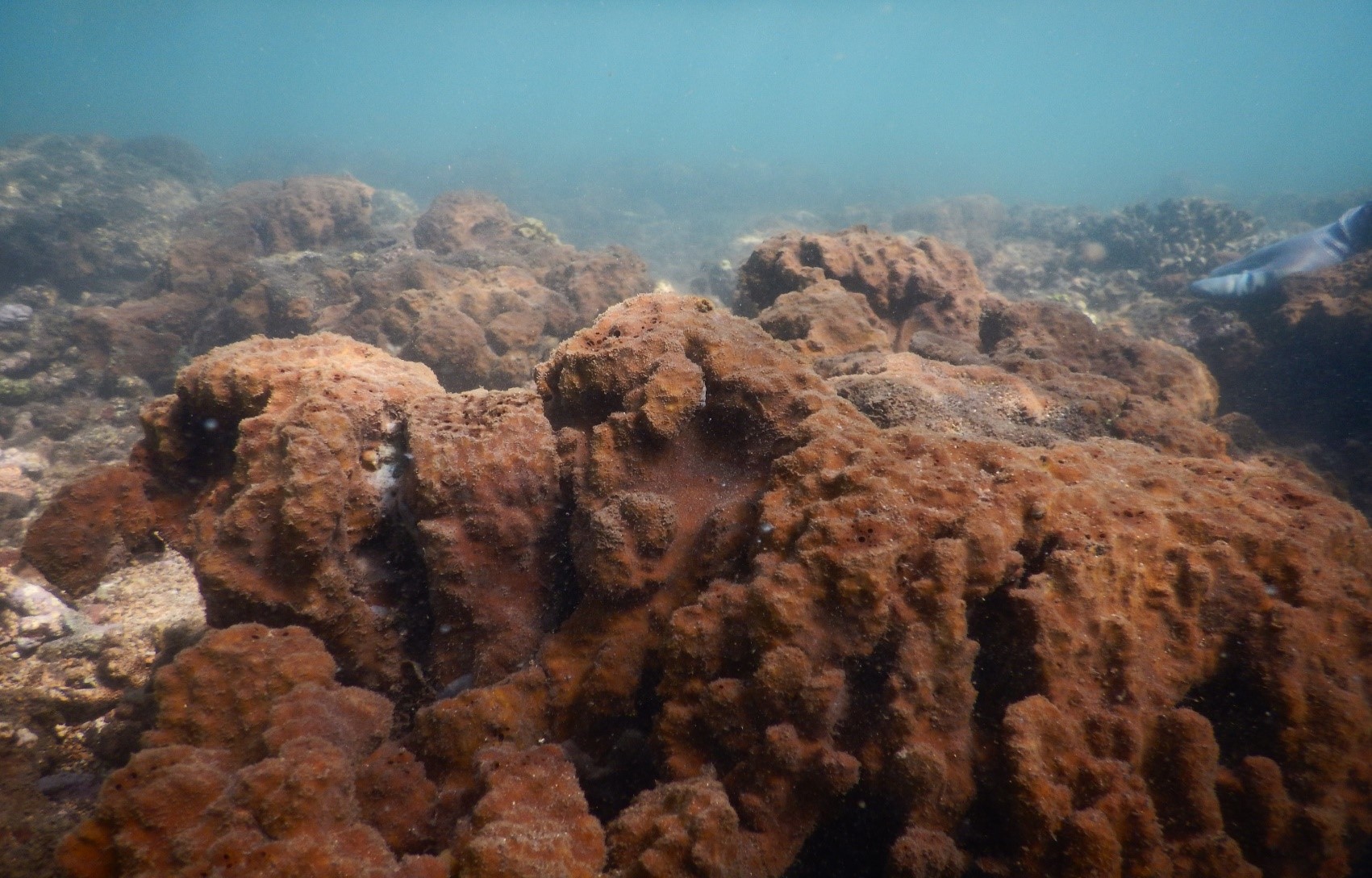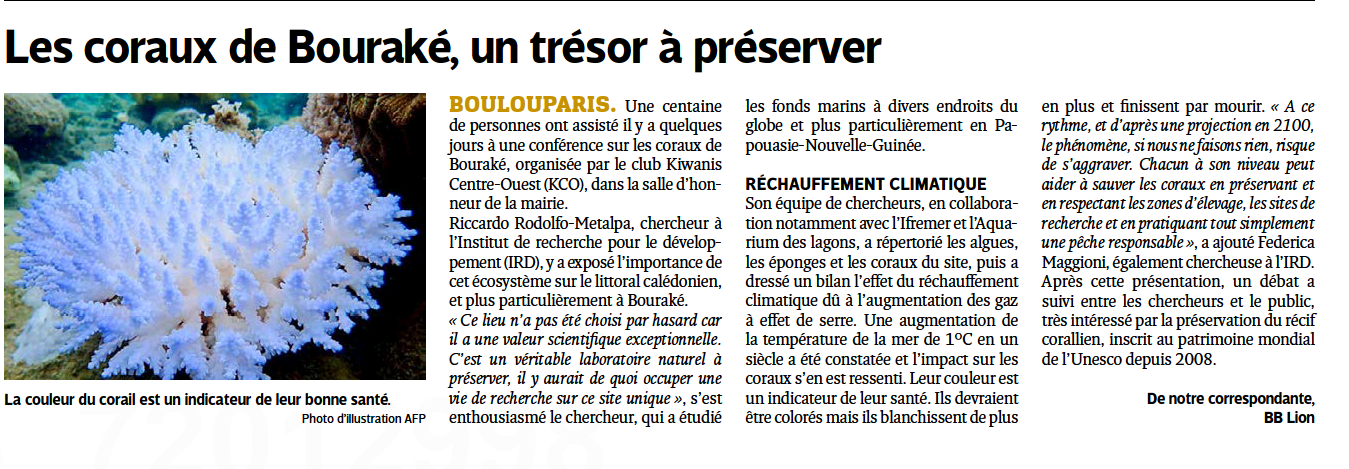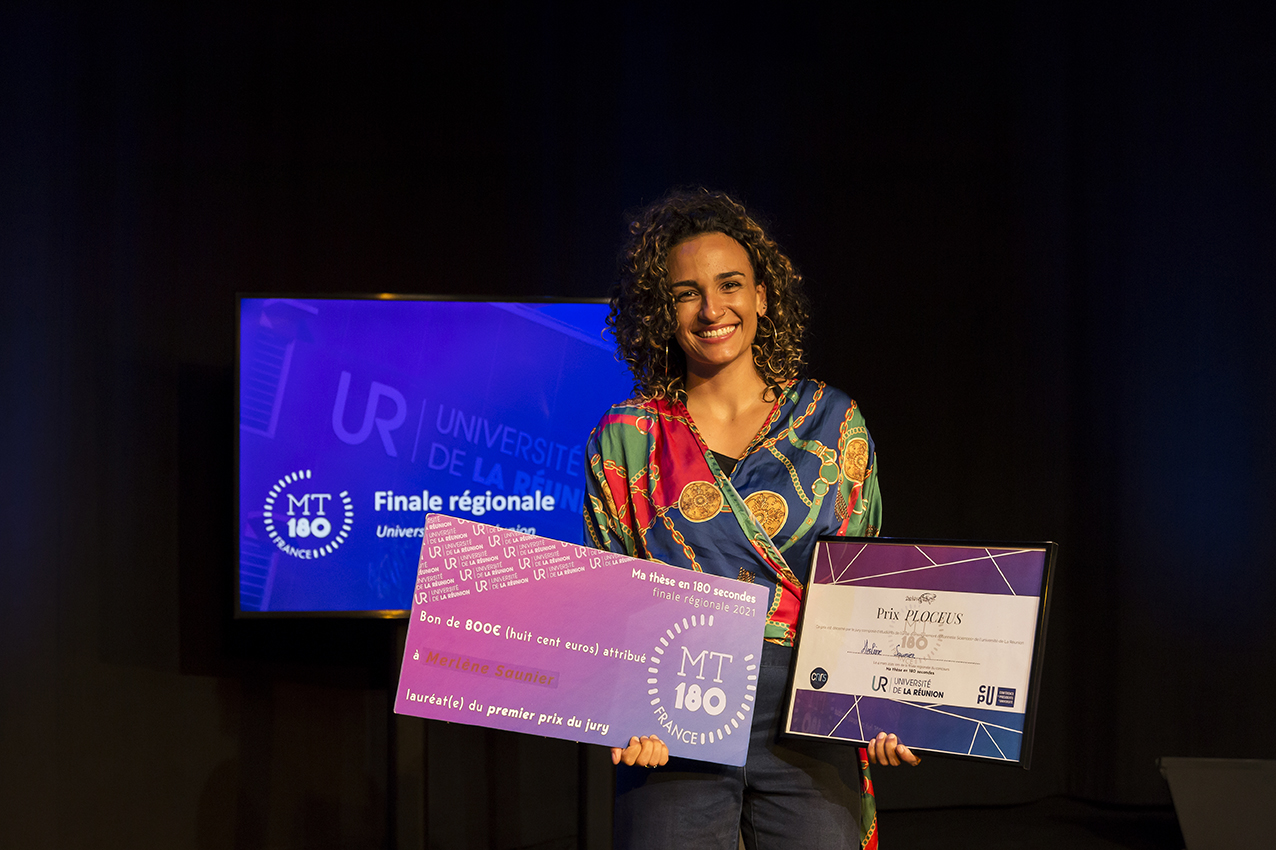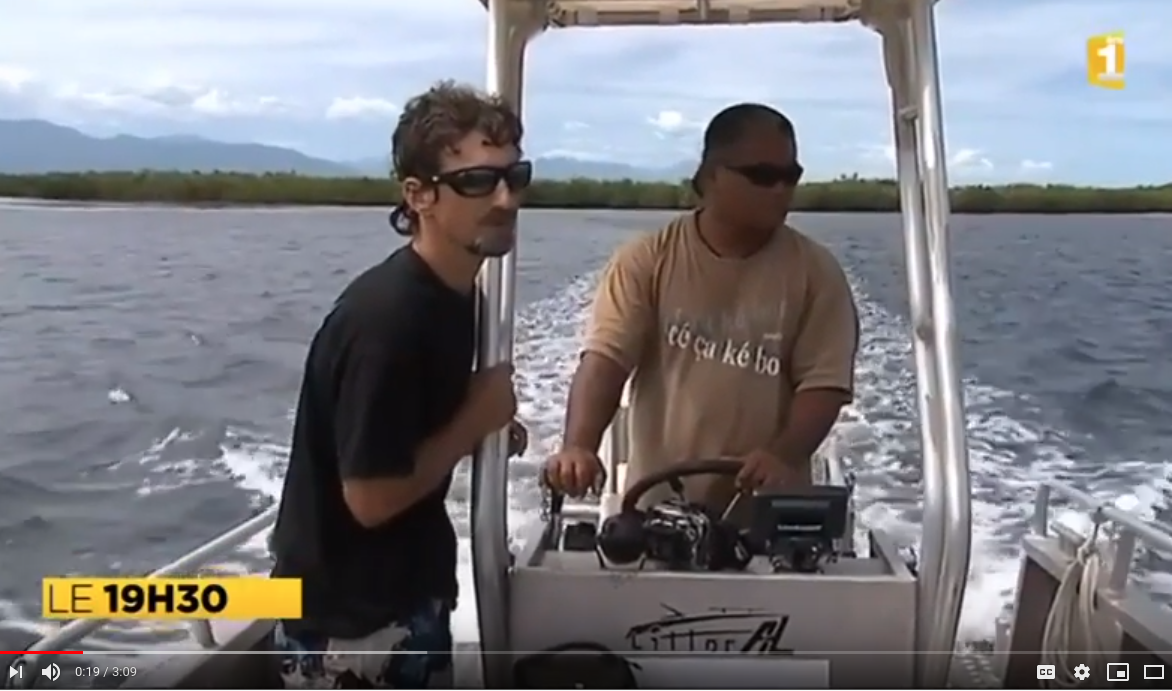Projet SuperNatural
Hope for coral reefs. Can acclimatization and adaptation follow the pace of climate change?
SuperNatural aims at understanding the ability of coral reefs and associated species to resist climate change. An international team will perform during ten days ambitious and innovative in situ experiments using species that live at the natural analogue for future conditions at Bouraké (New Caledonia). An interdisciplinary approach will identify the mechanisms by which corals and reef-associated species may have used to thrive under suboptimal conditions. Using reciprocal transplant and transgenerational experiments applied to species that live in this specific habitat, SuperNatural will characterize the physiological and evolutionary mechanisms that coral reefs, sponges, coralline algae and fish will be able to deploy to cope with future changes.

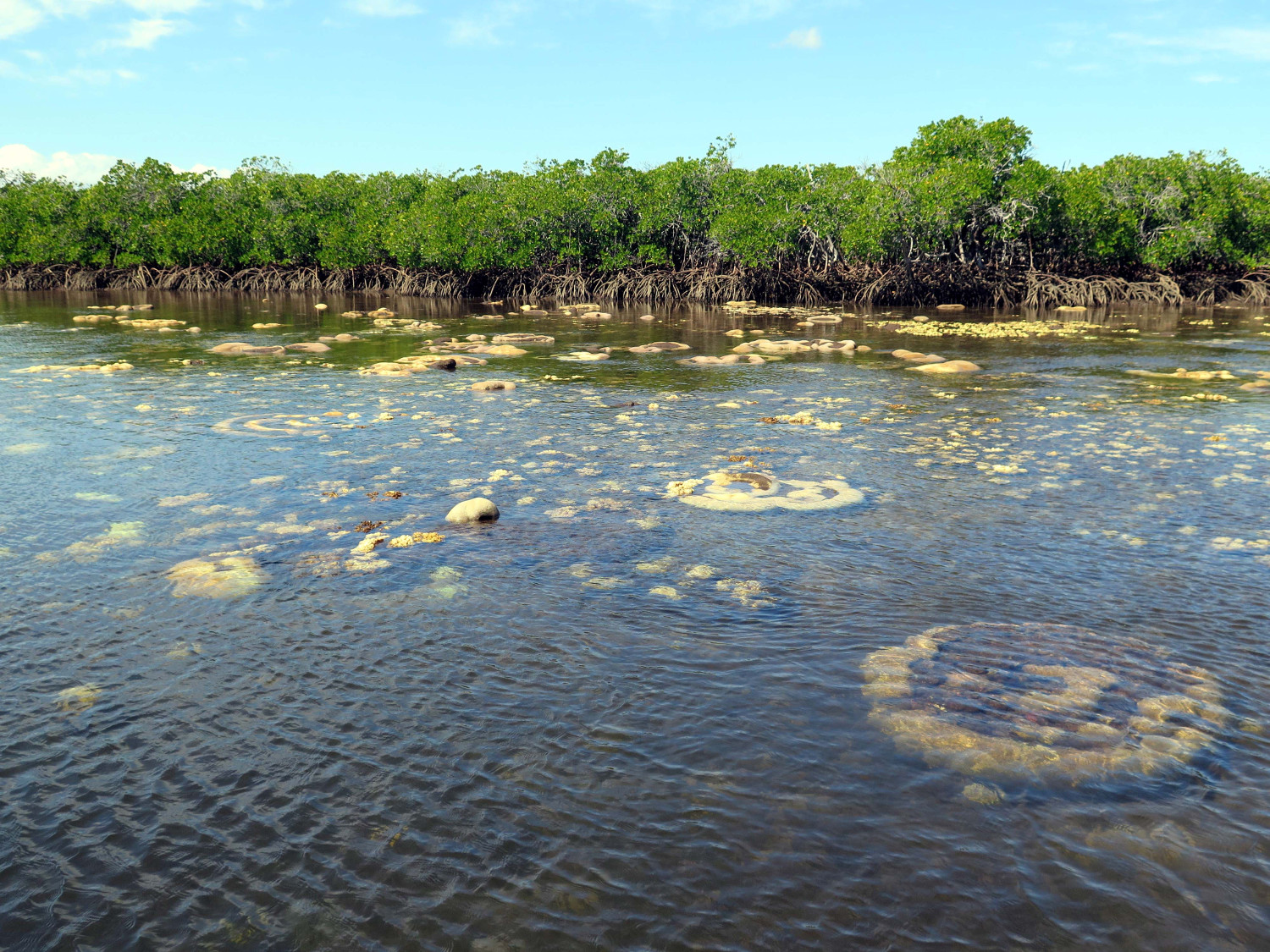
A unique study site
The originality of this project arises from the recent discovery of a very special site at Bouraké, in New Caledonia, where environmental conditions (temperature, pH and oxygen) are “suboptimal” and similar to those forecasted for the future (“natural analogue”). Bouraké is the only natural analogue of future climatic conditions exhibiting the three main parameters that drive climate change in the oceans: lower pH (<7.8) and oxygen (-20 to 30%), and warmer temperatures (+ 0.5 to 3°C). While these conditions are generally recognized as unfavourable to corals, there, a rich and abundant coral reef has developed. This novel natural analogue brings new hope for the future of coral reefs and provides a unique natural laboratory to explore how corals could keep pace with climate change.
Photo credits: Matthew Nittschke (up) and Serge Andrefouet (down)
The project
We will assess acclimatization and/or adaptation to combined acidification, warming and deoxygenation using coral species naturally living within extreme habitats at the shallow mangrove systems near Bouraké in New Caledonia; populations here have been chronically exposed to climate change-like conditions during their entire life, contrasting to the same species outside the mangrove under ambient reef conditions. An innovative integrated physiological and molecular approach will be used to identify for the first time organisms’ pathways of tolerance to extreme conditions via acclimatization and adaptation, as well as the associated costs and trade-offs this brings to key ‘fitness traits’ (e.g. growth, metabolic rates and cellular regulation). The use of field transplant experiments on species living within mangrove and reef habitats will provide a novel alternative over existing laboratory-based perturbation experiments, enabling more robust projections of organismal and ecosystem responses.

Fig. 1. Map showing study sites and stations (A); aerial photograph of the semi-enclosed lagoon of Bouraké (B); physicochemical parameters of seawater at control (C) and suboptimal stations (D) in February 2016.
PARTICIPANTS
Swire Institute of Marine Science - The University of Hong Kong, School of Biological Sciences
 Celia Schunter (University Hong Kong, Assistant Professor) Team fish
Celia Schunter (University Hong Kong, Assistant Professor) Team fish
 Sandra Ramirez Calero (University Hong Kong PhD) Team fish
Sandra Ramirez Calero (University Hong Kong PhD) Team fish
Victoria University of Wellington - School of Biological Science
 James Bell (Victoria University of Wellington, NZ, Prof) Team sponges
James Bell (Victoria University of Wellington, NZ, Prof) Team sponges
 Chris Cornwall (Victoria University of Wellington, NZ, Research Scientist) Team CCA
Chris Cornwall (Victoria University of Wellington, NZ, Research Scientist) Team CCA
Megan Shaffer (Victoria University of Wellington, NZ, Post doc) Team sponges
OIST, Okinawa Institute of Science and Technology
 Timothy Ravasi (OIST, Japan, Prof) Team fish
Timothy Ravasi (OIST, Japan, Prof) Team fish
 Billy Moore (OIST, Japan, MSc student) Team fish
Billy Moore (OIST, Japan, MSc student) Team fish
 Kawai Erina (OIST, Japan, MSc student) Team fish
Kawai Erina (OIST, Japan, MSc student) Team fish
Michaels Izumiyama (OIST, Japan, MSc student) Team fish
 Mia Hoogenboom (James Cook University, AUS, Assistant Professor) Team fish
Mia Hoogenboom (James Cook University, AUS, Assistant Professor) Team fish
 Gregory Torda (James Cook University, AUS, Research Scientist) Team corals ,
Gregory Torda (James Cook University, AUS, Research Scientist) Team corals ,
 Tess Hill (James Cook University, PhD) Team fish
Tess Hill (James Cook University, PhD) Team fish
Diperna Stephanie (James Cook University, MSc) Team fish
Special thanks to IRD image collaborator
 Jean-Michel Boré, underwater, field and drone film maker IRD images
Jean-Michel Boré, underwater, field and drone film maker IRD images



